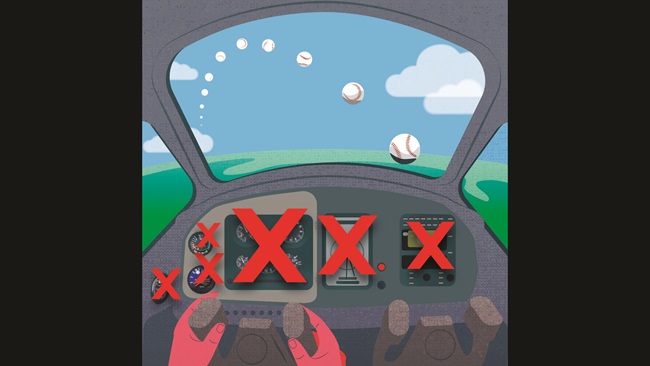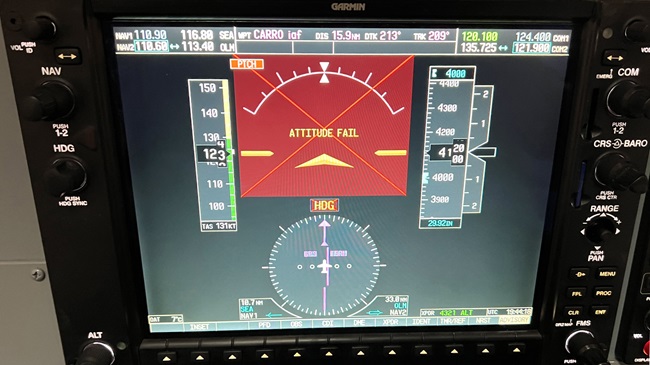Class B airspace 'excursions' pose GA risk
A general aviation aircraft is cruising not far from the boundary of a busy block of Class B airspace. The pilot is being careful to maintain situational awareness and not penetrate the airspace boundary. Not only would an incursion be a serious violation, but it also could elevate the risk of a midair collision.
As long as he remains clear of the nearest boundary, or below the lowest overhanging shelf of Class B airspace, safety is being satisfied, the pilot thinks as he flies across the extended centerline of a runway of the airport at the center of the airspace.
GA pilots may be surprised to learn that about eight percent of aircraft arriving at airports in Class B airspace, predominantly airliners, experience excursions, according to an FAA study presented to the Commercial Aviation Study Team in December 2016.
At John F. Kennedy International Airport in New York, the excursion rate was about 24 percent; that translates to almost 6,000 excursions a month. In Denver, there were over 34,000 excursions over a three-year period and 23 resolution alerts, in all cases involving an aircraft legally skirting the airspace boundary, and in most cases on approaches to Runways 35L and 35R, according to the analysis.
Excursions have the FAA’s attention. The agency has invited AOPA and other stakeholders to attend a three-day safety meeting in Washington, D.C., March 14 to 16 to identify the hazards and begin to find remedies.
Pilot education is part of that process, and in January, the FAA issued a Safety Alert For Operators (SAFO) that AOPA helped prepare to raise awareness about the excursion issue. (The study defines an excursion as “when an aircraft establishes itself inside the lateral & vertical limits of the Class B airspace and then exits the airspace before reentering.”)
One cause of excursions, the FAA notes in a 2015 memorandum that discusses a San Francisco Class B airspace modification study, is the aerodynamic efficiency of the newer generation of airliners. The new-generation aircraft “utilize a more efficient wing design that requires a shallower descent at reduced power levels.” But airspace constraints create scenarios in which the descent profiles those aircraft can fly “are not all wholly contained within the current Class B Airspace,” it says.
Meanwhile, excursion-related risks appear to be increasing as pilots not in contact with ATC become comfortable flying as close to airspace boundaries as on-board technology will permit.
“Pilots should be aware that when you get that close to certain types of airspace there is a need for increased vigilance to see and avoid other aircraft,” said Rune Duke, AOPA director of airspace and air traffic.
“The number of excursions is a growing issue for the National Airspace System that the FAA is trying to put focus on this year,” he added. “We look forward to participating to ensure that the concern is addressed without denying general aviation access to airspace.”
While the problem is being evaluated, a simple but effective mitigation Duke urges all VFR pilots to adopt is to request flight following from air traffic control.
The FAA also has a mitigation at its disposal, Duke adds, when it comes to publishing procedures such as standard terminal arrivals. In some cases, the published procedures have caused transport aircraft flying the profiles to exit and re-enter Class B airspace, despite the FAA’s own standards that preclude such occurrences. AOPA has noted the problem in airspace-design proceedings, and urged that excursions not become the basis for elevating the restrictiveness of additional airspace.
“AOPA has been vocal to the FAA that they need to follow their own policies, and safely capture arrival routes within controlled airspace to prevent near-midair-collisions or traffic collision avoidance system resolution advisories, which the data shows have happened,” he said.
The SAFO urges pilots preparing for flight in or near Class B airspace to review and brief the boundaries. On approach, “pilots and flightcrews operating within Class B airspace should be attentive to proper descent profiles and their current position relative to airspace boundaries. When receiving radar vectors, pilots and flightcrew should remain attentive to the lateral limits of the Class B airspace.”
Pilots flying near Class B airspace are urged to remain vigilant and situationally aware, “particularly in or near Class B airspace boundaries where the risk posed by an excursion or incursion is greatest,” the SAFO urges.
Avoiding distraction in excursion-prone airspace is emphasized in fine detail; the SAFO recommends that pilots “coordinate the timing and manner in which they program avionics or flight management systems,” as part of their distraction avoidance procedures.



